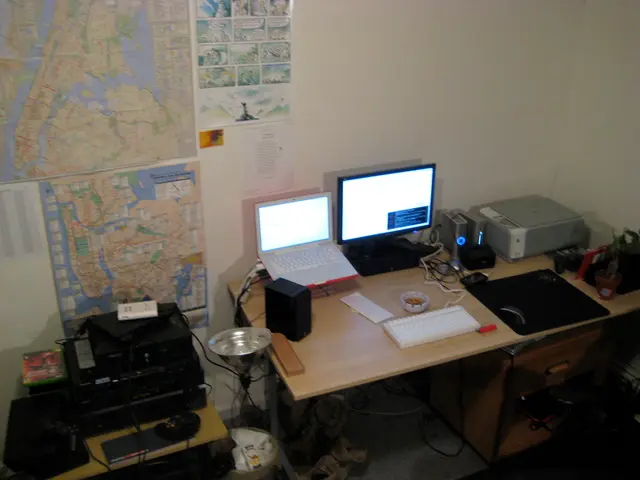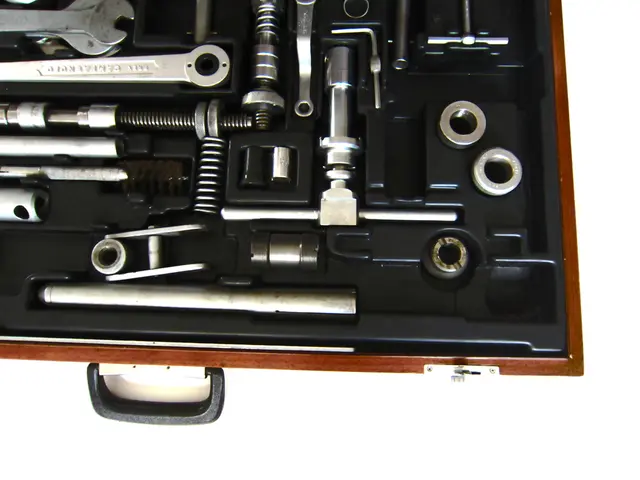America may soon welcome the most lavish minivan ever, as the new Mercedes VLE is set to deliver unparalleled opulence.
Mercedes-Benz Unveils Two New Electric Vans: The VLE and VLS
Mercedes-Benz Vans is set to debut two new electric vans later this year, the VLE and VLS. These vans are part of the company's VAN.EA (Van Electric Architecture) push, designed to revolutionise the electric van market.
The VLE and VLS ride on a modular battery-first design, offering a flat floor, improved cabin space, and a lower center of gravity. This design is a testament to Mercedes-Benz's commitment to battery-first packaging, a key feature of the VAN.EA platform.
The VLE is inspired by the Vision V concept, featuring a puckered grille panel, tri-DRL headlights, and a sculpted bumper. The rear of the VLE boasts a halo-style taillight cluster and chamfered tailgate edges. Its side profile has a dynamic profile with a pronounced shoulder line and rear quarter glass cascading downwards, giving it a unique and striking appearance.
The VLE will cater to larger groups with flexible three-row arrangements, while the VLS targets chauffeur-driven clients with individual captain's chairs, lounge-style seating, and integrated work surfaces. The interior of the VLE will inherit design cues from the Vision V Concept and the production EQS, including an upright pillar-to-pillar MBUX Hyperscreen. Both the VLE and VLS will also use sustainable luxury materials, such as recycled leathers and natural wood veneers.
In terms of performance, the entry-level models of the VLE are expected to have a rear-mounted motor producing around 268 hp (200 kW). Dual-motor, 4MATIC all-wheel drive versions of the VLE could have outputs closer to 470 hp (350 kW). Both the VLE and VLS will offer both single and dual-motor setups.
The VAN.EA platform underpins both the VLE and VLS, featuring a modular design with three core sections (front, center, and rear) for versatile vehicle sizes and specifications. This design allows for a wide range of possibilities, ensuring that both the VLE and VLS can cater to various needs.
Vehicle-to-grid and bi-directional charging are expected to be part of the package for the VLE and VLS. This feature allows the vans to not only be charged but also to supply power back to the grid, making them even more sustainable and versatile.
The VLE and VLS will compete with a few rivals in markets outside North America, including the hybrid Lexus LM, Volvo EM90, and Zeekr 009. In the USA, the ID. Buzz LWB could potentially be cross-shopped with the VLE.
Battery capacities will likely range from 90 kWh to beyond 116 kWh, enabling a WLTP range exceeding 311 miles (500 km). Both the VLE and VLS will feature an 800-volt electrical system, supporting a 22 kW AC charger and ultra-fast DC charging at up to 350 kW.
With their impressive performance, sleek designs, and commitment to sustainability, the VLE and VLS are set to make a significant impact in the electric van market. Stay tuned for more updates as these innovative vehicles approach their release.
Read also:
- Goodyear in 2025: Advancement in Total Mobility through the Launch of Kmax Gen-3 by Goodyear
- Electric SUV Showdown: Vinfast VF6 or MG Windsor EV - Your Choice Revealed
- United States Secures $632 Million to Fuel Electric Vehicle Revolution
- IM Motors reveals extended-range powertrain akin to installing an internal combustion engine in a Tesla Model Y







